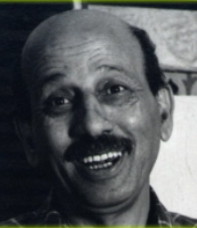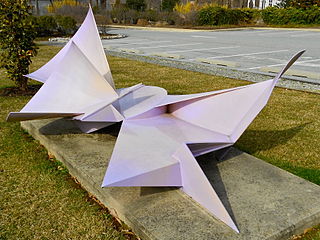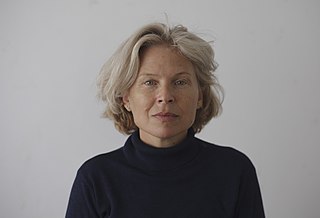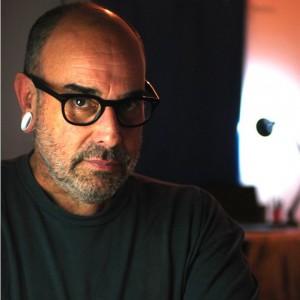
Menashe Kadishman was an Israeli sculptor and painter.

Igael Tumarkin was an Israeli painter and sculptor.

Chaim Gross was an American sculptor and educator of Ukrainian Jewish origin. Gross studied and taught at the Educational Alliance Art School in New York City’s Lower Manhattan. He summered for many years in Provincetown.
Mordechai Avniel (1900–1989), variant name Mordecai Avniel, was an Israeli painter, sculptor and lawyer.
Constantin Lucaci was a Romanian contemporary sculptor, best known for his monumentalist sculptures and his kinetic fountains most made from stainless steel, among which those from the Romanian cities of Reșița and Constanța are best known. He was born in Bocșa Română, today a part of Bocșa, Caraș-Severin County.

Abed Abdi is a Palestinian painter, graphic designer, sculptor and art lecturer.

Isaac Witkin was an internationally renowned modern sculptor born in Johannesburg, South Africa. Witkin entered Saint Martin's School of Art in London in 1957 and studied under Sir Anthony Caro and alongside artists including Phillip King, William G. Tucker, David Annesley, and Michael Bolus. Witkin helped create a new style of sculpture which led to this New Generation of sculptors and their innovating abstract forms of modern sculpture reaching and changing the art world. Witkin's abstract works of usually brightly colored fiberglass or wood was noted for its "witty, Pop-Art look".

Mordechai (Motti) Mizrachi is an Israeli multimedia artist who creates politically engaged conceptual works that combine sculpture, video, photography, public art and performance. Dough, Via Dolorosa (1973) and Healing (1980) marked the emergence of avant-garde Israeli performance and video art. Since the 1980s, he has created numerous site specific public sculptures.

Sigalit Landau is an Israeli sculptor, video and installation artist.

Avraham Eilat is an Israeli artist, educator and curator. He graduated from the Hebrew Gimnasium Herzliya in Tel Aviv, and was enrolled in Hashomer Hatzair youth movement for nine years starting at age 9. After military service in 1960 he joined in Kibbutz Shamir, situated on the western slopes of the Golan Heights in the Upper Galilee, where he was a member until 1978. During his first years in the kibbutz, Eilat was a shepherd side-by-side with his kibbutz adopting father the painter Moshe Cagan. Close contact with nature and its phenomenon and the features of local landscape deeply influenced his way of thinking and established the themes appearing along all his career in his art. The contrast between man-made geometrical shapes of fish ponds and the free flowing of the flora and typical hilly landscape of the Hula Valley area, crystallized his visual language and determined its formal and thematic foundations. Avraham Eilat employs skillfully various means of expression: drawing and painting, etching, photography, sculpture, installation, and often a combination of more than one. Using those means enriches his basic statement and makes it complex and multi-layered. Avraham Eilat lives in Ein Hod Artists Village, Israel, with his spouse Margol Guttman, works in his studio in Pyramida Center of Contemporary Art, Wadi Salib, Haifa, and in his studio in Ein Hod.

Amnon Barzel is an internationally known art curator and author.
Jems Robert Koko Bi is an Ivorian sculptor.

Rudolf (Rudi) Lehmann was a German-born Israeli sculptor and Wood carving artist. He was one of the pioneers of sculpture in the State of Israel.

David Adika is an Israeli photographer and educator.

Uri Katzenstein was an Israeli visual artist, sculptor, musician, builder of musical instruments and sound machines, and film maker.
Ola-Dele Kuku was a Nigerian architect and artist of Yoruba origin. He lived and worked between Nigeria and Belgium.

Michael Sgan-Cohen was an Israeli artist, art historian, curator and critic. His oeuvre touches different realms of the Israeli experience and the Hebrew language, displaying a strong connection to the Jewish Scriptures. His works were nurtured by his extensive knowledge of Art history, philosophy, Biblical Texts, Jewish thought and Mysticism, which in turn illuminated all these pursuits. His engagement with Judaism and the Bible as a secular scholar and his vast knowledge of modern and contemporary art contributed to the development of a distinctive approach which combined Jewish and Israeli symbols and images to create a multilayered and contemporary artistic language.
Jakob Eisenscher (1896–1980) was born in the Austro-Hungarian Empire. He was an Israeli artist.
The Arab Museum of Contemporary Art and Heritage is a Contemporary Art Museum in Arab city Sakhnin in Israel.

Tsibi Geva is one of Israeli's most prominent and influential artists. is an Israeli educator and music/art critic. Geva's work is a cross between graffiti, sculpture and abstract expressionism.














